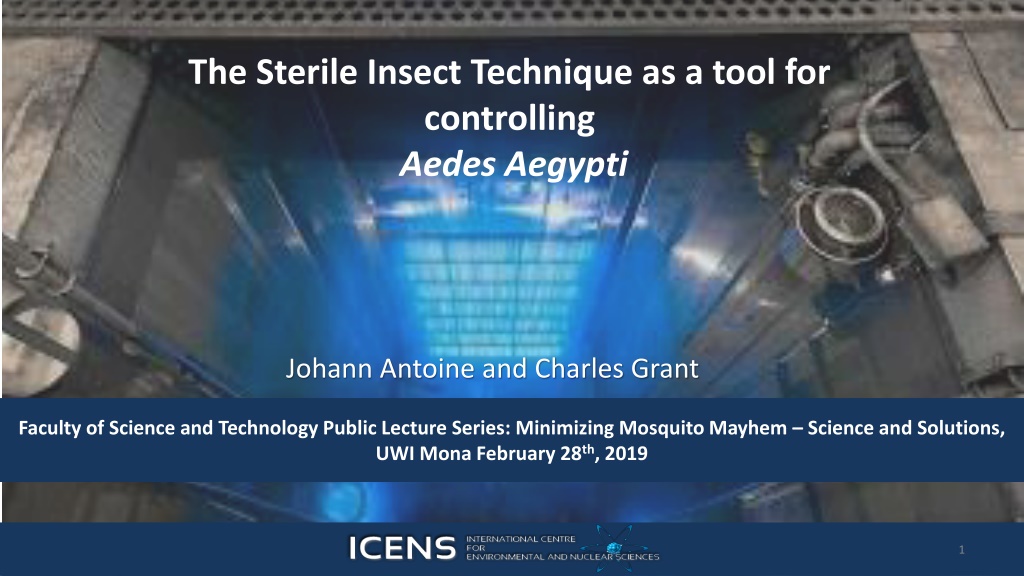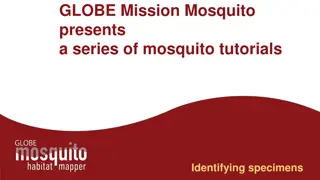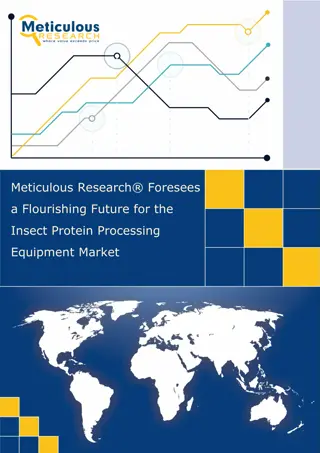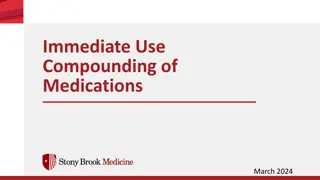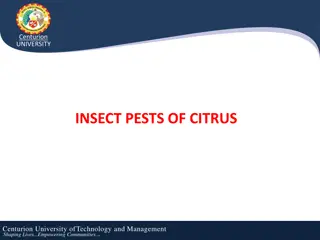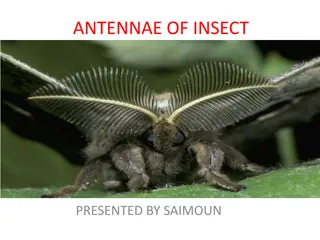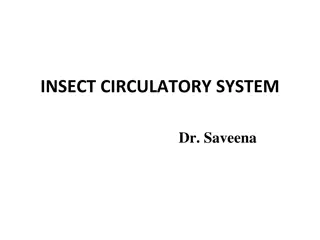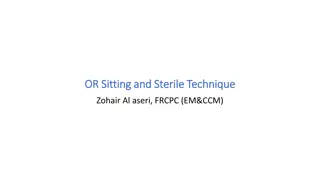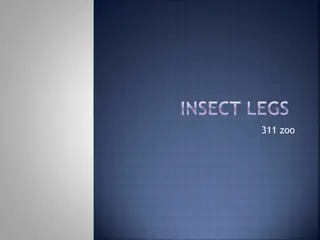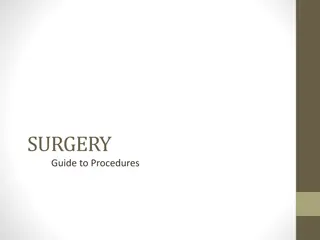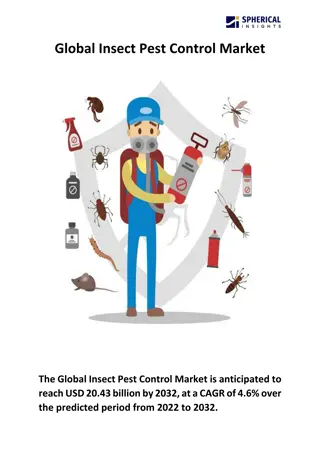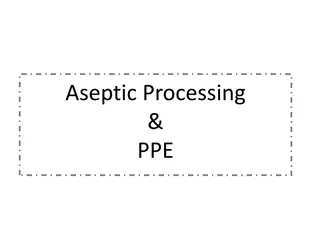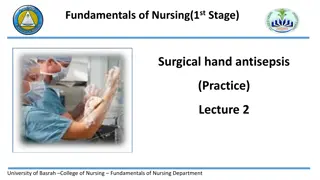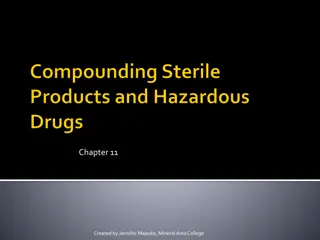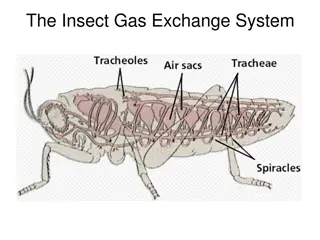Utilizing Sterile Insect Technique for Aedes Aegypti Control
The Sterile Insect Technique (SIT) is a biologically-based method used to manage key insect pests by releasing sterile insects to decrease population reproduction. This technique, developed through genetic manipulation and ionizing radiation, has been instrumental in controlling insect populations like the New World Screwworm fly. SIT involves inducing dominant lethal mutations in insects to impede their reproduction effectively. By implementing SIT alongside other pest control methods, it offers a promising solution for minimizing mosquito populations.
- Insect Pest Control
- Sterile Insect Technique
- Biological Method
- Mosquito Control
- Genetic Manipulation
Download Presentation

Please find below an Image/Link to download the presentation.
The content on the website is provided AS IS for your information and personal use only. It may not be sold, licensed, or shared on other websites without obtaining consent from the author. Download presentation by click this link. If you encounter any issues during the download, it is possible that the publisher has removed the file from their server.
E N D
Presentation Transcript
The Sterile Insect Technique as a tool for controlling Aedes Aegypti Johann Antoine and Charles Grant Faculty of Science and Technology Public Lecture Series: Minimizing Mosquito Mayhem Science and Solutions, UWI Mona February 28th, 2019 Home 1
Home What is the SIT? The Sterile Insect Technique, best known by its acronym SIT and also identified as the Sterile Insect Release Method (SIRM), is a biologically-based method for the management of key insect pests of agricultural and medical/veterinary importance. In the FAO glossary, the Sterile Insect Technique is defined as a method of pest control using area-wide inundative releases of sterile insects to reduce reproduction in a field population of the same species - Joint FAO/IAEA Programme Nuclear Techniques in Food and Agriculture This technique is usually used as one of the components of area-wide integrated pest management programs, where the density of the target insect pest population is initially reduced by other control methods, like cultural or chemical control. 2 Science For Today - Public Lecture Series: Minimizing Mosquito Mayhem Science and Solutions, UWI Mona, February 28th, 2019
Home The Development of SIT The idea that populations of economically important insect species might be controlled, managed or eradicated through genetic manipulation was conceived in the late 1930s by an American entomologist A. S. Serebrovskii, Soviet geneticist at Moscow State University also independently published this concept. F. L. Vanderplank at a tsetse field research station in rural Tanganyika (now Tanzania) used hybrid sterility to suppress a tsetse population in a large field experiment, but lacked the resources to develop this method further Hermann J. Muller (1890-1967) Raymond C. Bushland 1910-1995) Edward F. Knipling (1909-2000) Knipling and with R.C. Bushland exploited H. J. Muller's discovery that ionizing radiation can induce dominant lethal mutations. Their efforts led to the eradication of the New World Screwworm fly C. hominivorax from the southern United States. Cochliomyia hominivorax 3 Science For Today - Public Lecture Series: Minimizing Mosquito Mayhem Science and Solutions, UWI Mona, February 28th, 2019
Home The Principle of SIT- Mosquitoes 4 Science For Today - Public Lecture Series: Minimizing Mosquito Mayhem Science and Solutions, UWI Mona, February 28th, 2019
Home Radio-induced Sterility Radiation-induced dominant lethal mutations arise as a result of chromosomal damage in the treated cells A dominant lethal mutation occurring in a germ cell does not affect the maturation of the cell into a gamete or the participation of the gamete to form the zygote but causes the death of the developing embryo. The success of the SIT using ionizing radiation relies essentially on the transfer of competitive sperm from released irradiated males to wild females 5 Science For Today - Public Lecture Series: Minimizing Mosquito Mayhem Science and Solutions, UWI Mona, February 28th, 2019
Home Dose Optimisation The radiation absorbed dose that is used to induce sterility is of prime importance to SIT programmes. Insects that receive too low a dose are not sufficiently sterile and those that receive too high a dose may be uncompetitive, reducing the effectiveness of the program by requiring that a greater number of sterile insects must be released 6 Science For Today - Public Lecture Series: Minimizing Mosquito Mayhem Science and Solutions, UWI Mona, February 28th, 2019
Home Sources of Ionizing Radiation The types of irradiator used most frequently by radio-entomologists for the past four decades have been those equipped with the radioisotopes60Co or137Cs as source of gamma rays. Isotopic irradiators have the advantage that they have a long half-life and that their dose rate is high. High-energy electrons are generated by electron accelerators, not involving radioisotope. Likewise, most X-ray machines do not use radioisotopes and these are alternatives to isotopic sources. any type of The major advantages of these radiation sources are that no radioactive waste is produced, no radiation is produced when switched off, and the dose rate from electron accelerators can be hundred of times greater than from gamma irradiators 7 Science For Today - Public Lecture Series: Minimizing Mosquito Mayhem Science and Solutions, UWI Mona, February 28th, 2019
Home Considerations for the successful implementation The species must produce exclusively sexually Mass rearing procedures must be available Released sterile insects must present adequate dispersion Sterilization must not compromise the competitiveness of the males Females must preferably mate only once or irradiated sperm must be very competitive Population density of the target species must be low, making the release of a dominant population of sterile males over an extended period of time economically viable 8 Science For Today - Public Lecture Series: Minimizing Mosquito Mayhem Science and Solutions, UWI Mona, February 28th, 2019
Home Advantages of the SIT Sterile insects are not self-replicating and therefore cannot become established in the environment. Breaking the pest's reproductive cycle, also called autocidal control, is by definition species- specific. The SIT does not introduce non-native species into an ecosystem. Uses no chemicals; leaves no residue 9 Science For Today - Public Lecture Series: Minimizing Mosquito Mayhem Science and Solutions, UWI Mona, February 28th, 2019
Home A History of the SIT - Mosquitoes 10 Science For Today - Public Lecture Series: Minimizing Mosquito Mayhem Science and Solutions, UWI Mona, February 28th, 2019
Home Phased Conditional Approach Operational Pre- operational Pilot preparation and Implementation Collection of baseline data 11 Science For Today - Public Lecture Series: Minimizing Mosquito Mayhem Science and Solutions, UWI Mona, February 28th, 2019
Home ..in conclusion The SIT is NOT a silver bullet and invariably is a component of an area-wide integrated pest management programme The sterile males produced will not be radioactive No use of transgenic animals Phased conditional approach integral to the success of the SIT for mosquitoes Success may involve a combination of sterilization techniques for greater efficacy 12 Science For Today - Public Lecture Series: Minimizing Mosquito Mayhem Science and Solutions, UWI Mona, February 28th, 2019
